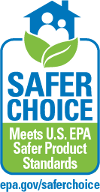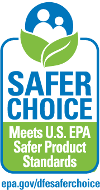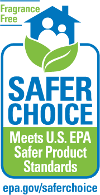Insights From GlobalChem 2015
Client Alert | 40 min read | 03.09.15
Last week, the chemicals world gathered at the annual GlobalChem conference in Baltimore, Maryland. Representatives from chemical companies, academia, and scientific organizations met with regulators from the U.S., Canada and elsewhere to discuss the latest regulatory trends and developments affecting chemicals. Set out below are some of the key insights from the conference.
TSCA Modernization
Modernization of the Toxic Substances Control Act is still a high priority for industry and EPA alike. Indeed, some industry representatives at the conference posited that TSCA reform is essential if the U.S. is to maintain a global leadership position, or even a seat at the table, with respect to the regulation of chemicals.
However, despite significant progress that was made in the last Congress, and near universal agreement that modernization of the statute is needed, the prospects for enacting legislation this Congress remain uncertain. Legislative action is likely to pick up this Spring: a new draft compromise (Udall-Vitter) bill was circulated last week, although not yet made public, and a hearing is likely the week of March 16. Other draft bills may be released imminently. Still, it remains unclear whether partisan differences on pivotal issues like preemption can be bridged this year, before Congress becomes preoccupied with the 2016 elections.
Priorities for EPA in 2015
While waiting for Congress to act on TSCA modernization, EPA's chemicals program plans to move forward aggressively utilizing its existing authorities under the law to pursue an ambitious agenda. Wendy Cleland-Hamnett, the Director of EPA's Office of Pollution Prevention and Toxics (OPPT), outlined three main areas of focus for the Agency's chemicals program in the coming year:
- Risk assessment and reduction for Work Plan chemicals. OPPT will continue to work on completing risk assessments for the 83 Work Plan chemicals, and taking regulatory action when the Agency identifies risk concerns for those chemicals. To date, EPA has completed risk assessments for four Work Plan chemicals: (i) methylene chloride (also referred to as dichloromethane, or DCM); (ii) antimony trioxide (ATO); (iii) the fragrance chemical, HHCB; and (iv) the organic solvent, trichloroethylene (TCE). For two of these chemicals, TCE and DCM, EPA's assessment identified risk concerns. Cleland-Hamnett indicated that EPA will be considering a range of risk reduction measures for these two substances, including possible rulemaking under TSCA Section 6. In addition, OPPT expects to announce its next batch of Work Plan chemical assessments within the next month or so.
- Promotion of safer chemistries. EPA plans to use market-based approaches to promote the design and use of safer chemicals, and EPA's Design for the Environment (DfE) program will figure prominently in these efforts. Timed to coincide with the final day of the conference, EPA unveiled new DfE "safer products" logos that have been under development for the past year. The logos are reproduced below.



Companies will be able to use these logos on their products once those products that have been verified to satisfy certain qualifying criteria. EPA hopes that these new logos will resonate with consumers and help drive their purchasing decisions. For more information on the safer products program, click here.
Other market-based approaches being used by EPA to promote safer chemistries include EPA's Safer Chemical Ingredients List (SCIL), which is primarily intended to provide manufacturers with the information they need to design safer chemical products (click here for more information), as well as the Environmentally Preferable Purchasing Program (EPP), which aims to facilitate the procurement of safer chemical products by federal government agencies and departments.
- Expanding access to information on chemicals. The last priority highlighted by Cleland-Hamnett is OPPT's work to provide stakeholders with greater access to the vast amount of health and safety-related data that EPA possesses on chemicals in commerce in the U.S. This information is being made available through EPA's ChemView web portal, which was introduced last year and currently contains information on roughly 10,000 chemicals.
Endocrine Disruptors
The Endocrine Disruptor Screening Program (EDSP) will undergo transformative changes over the next year or so, because of major advances in computational toxicology and high throughput screening (HST) techniques. These techniques, which have been the subject of multiple peer reviews by the FIFRA Scientific Advisory Panel and have been validated against multiple assays, will be used to narrow and prioritize the universe chemicals subject to screening and testing under the program. According to David Dix, Director of EPA's Office of Science Coordination and Policy, these tools will allow EPA to complete its screening of 10,000 chemicals within a matter of years, rather than decades.
What does this mean for companies that manufacture or import chemicals on List 1 or List 2?
- For List 1 chemicals, EPA plans to complete its weight of evidence determinations (based on the Tier 1 screening data it has received) by this Fall. According to Dix, most of the List 1 chemicals that have been evaluated to date show little or no estrogen or androgen activity, which suggests that few of these chemicals will be required to proceed to Tier 2 testing.
- For List 2 chemicals it appears likely that EPA's use of computational and HST tools will result in a substantial reduction in number of chemicals that will ultimately be the subject of test orders, as well as a reduction in the number of assays those chemicals will have to undergo. (For example, EPA has used computational and HST tools to screen approximately 60 of the 107 chemicals on List 2, and most of those chemicals were found to demonstrate little or no estrogenic activity – suggesting that screening assays may not be needed for these substances.) As a consequence, it appears very likely that test orders for substances on List 2 will be delayed until much later this year, at the earliest, to allow for further validation of computational methods as well as additional screening (and paring down) of List 2 chemicals using those tools.
Nanotechnology and Fracking Chemicals
Conference attendees were reminded that EPA is currently working on two proposed rulemakings under TSCA Section 8(a) – one pertaining to chemicals used in hydraulic fracturing operations, and the other pertaining to nanoscale materials. TSCA Section 8(a) provides EPA with the authority to require manufacturers, importers and processors of a chemical substance to submit information to the Agency regarding the identity, volume and intended uses of the substance as well as information on potential exposures to the substance and any existing health and safety data pertaining to the substance.
OPPT Director Wendy Cleland-Hamnett indicated that the proposed rule for fracking chemicals is unlikely to be published before the end of the year. The timing of the nanomaterials proposed rule is unclear, however EPA's most recent regulatory agenda indicates that publication of the proposed rule might occur early in 2015.
State Chemical Regulations
Much discussion centered around state efforts to regulate chemicals while TSCA reform lags in Congress. Most notably, California, Washington and Vermont are no longer in the minority with their efforts—in 2015, the industry expects 28 or more states to introduce and possibly implement new chemical regulations. These regulations range from initiatives targeted at specific chemicals like flame retardants, to general reporting and labeling efforts modeled after California and Washington states' laws. And whether these initiatives result in outright bans, restrictions, or "only" registration obligation, the effort required by industry to track and comply with these various regimes will take significant time and money.
Currently, there are chemical regulatory bills pending in 11 states, with another forthcoming in the District of Columbia next month. Some of the most notable state legislative efforts include:
- Florida's proposal to address a list of 50 "chemicals of concern" through labeling on consumer products designed for use by pregnant women and children,
- Minnesota's proposal for a Washington-state type of chemical content reporting bill,
- the governor of Washington state's efforts to implement regulations similar to California's Safer Consumer Products Regulations,
- efforts in New York from both the governor's office and the legislature to address chemistry in children's products and pet supplies by limiting or banning certain chemicals,
- Oregon's proposed legislation that is modeled after Washington state's reporting law, including the wholesale adoption of Washington's chemical list.
Additional regulatory proposals are springing up at the local level. For example, on January 7, 2015, Albany County (NY) enacted the Toxic-Free Toys Act, which bans the sale of children's products containing seven specified chemicals. Similar proposals are being debated in Westchester and Suffolk counties, which would also potentially ban certain chemicals from children's products.
The discussion also included an update on the status of one of the most notorious state chemical regulations, California's Proposition 65. The speakers reported that private enforcement of Prop 65 has not slowed down: from January 1 through February 9 of this year, 86 new 60-day notices were filed. Reform efforts also continue to move along and are on-pace for finalization this summer. The current proposal's changes to the "dirty dozen" labeling, required yellow-triangle pictogram, posted information on a state-sponsored website, and foreign language labeling requirements were mentioned as the most notable changes. The audience was reminded, as we have previously reported, there is a public hearing on March 25 and the public comment period ends on April 8, 2015.
Take-Aways and Predictions
While chemical reform at the Federal level continues to be elusive, EPA and the states cannot be accused of sitting on their hands. From consumer-facing efforts like EPA's redesigned "Safer Choice" labeling, to legislative efforts in a majority of states across America, and ongoing programs such as the Endocrine Disruptor Screening Program, there are many moving parts for the industry to follow. And the expansion of the reach of these efforts means that more than just chemical producers should take note. For assistance in addressing how these changes may impact your company, contact one of the Crowell & Moring attorneys listed on this alert.
Contacts
Insights
Client Alert | 7 min read | 01.05.26
Consideration of Artificial Intelligence in Arbitration Terms of Reference
As artificial intelligence (AI) continues to evolve and integrate into various aspects of legal practice, counsel and arbitral tribunals drawing up their Terms of Reference (TOR) establishing the terms of the dispute being referred to arbitration and also formulating their procedural orders should consider the implications of AI. This client alert highlights the importance of addressing AI in TOR negotiations and provides an overview of likely topics international arbitration practitioners can expect to treat in TORs and procedural orders.
Client Alert | 4 min read | 12.31.25
Raising the Bar: New York Expands Consumer Protection Law with FAIR Business Practices Act
Client Alert | 4 min read | 12.30.25
Client Alert | 6 min read | 12.30.25
Investor Advisory Committee Recommends SEC Disclosure Guidelines for Artificial Intelligence



